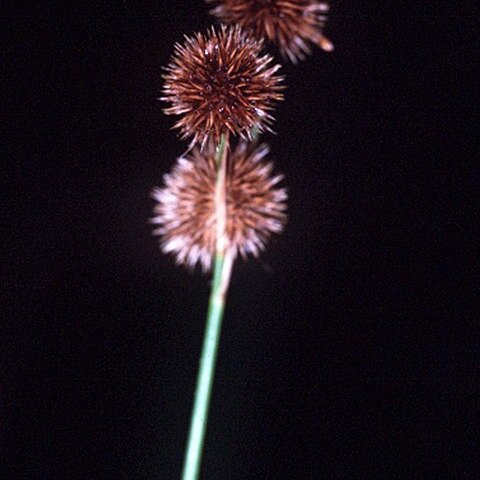Tufted perennial, reddish-tinged. Stems to 80 cm high, distinctly septate internally just below inflorescence. Leaves terete or ± compressed with ± distinct transverse septa. Inflorescence 2-5 cm long with few stiff branches and 3-5-(6) hemispherical to globose many-flowered clusters to 8 mm diam.; leaf-like subtending bract much < inflorescence but each individual flower-cluster subtended by 1-2 bracts > flowers. Tepals 3.5-4 mm long, outer > inner, very narrow, stiff, acuminate. Stamens 3. Capsules immature in only N.Z. specimen.
Stems erect, 3–8 dm, aligned on a stout rhizome; lvs terete, septate; infl 2–10 cm, open or congested, with 3–10(–20) bristly, globose, densely many-fld heads 1 cm thick; fls eprophyllate; tep lance-subulate, the sep 3.2–3.8 mm, the pet 2.2–3.2 mm; stamens 3, shorter than the tep; fr unilocular, trigonously oblong-prismatic, abruptly acute and mucronate, 1.5–2.7 mm, nearly concealed within the perianth; 2n=44. Damp or wet soil; Mass. to Ga.; s. Ont. to O., Minn., and Kans., s. to Miss. and Tex.

